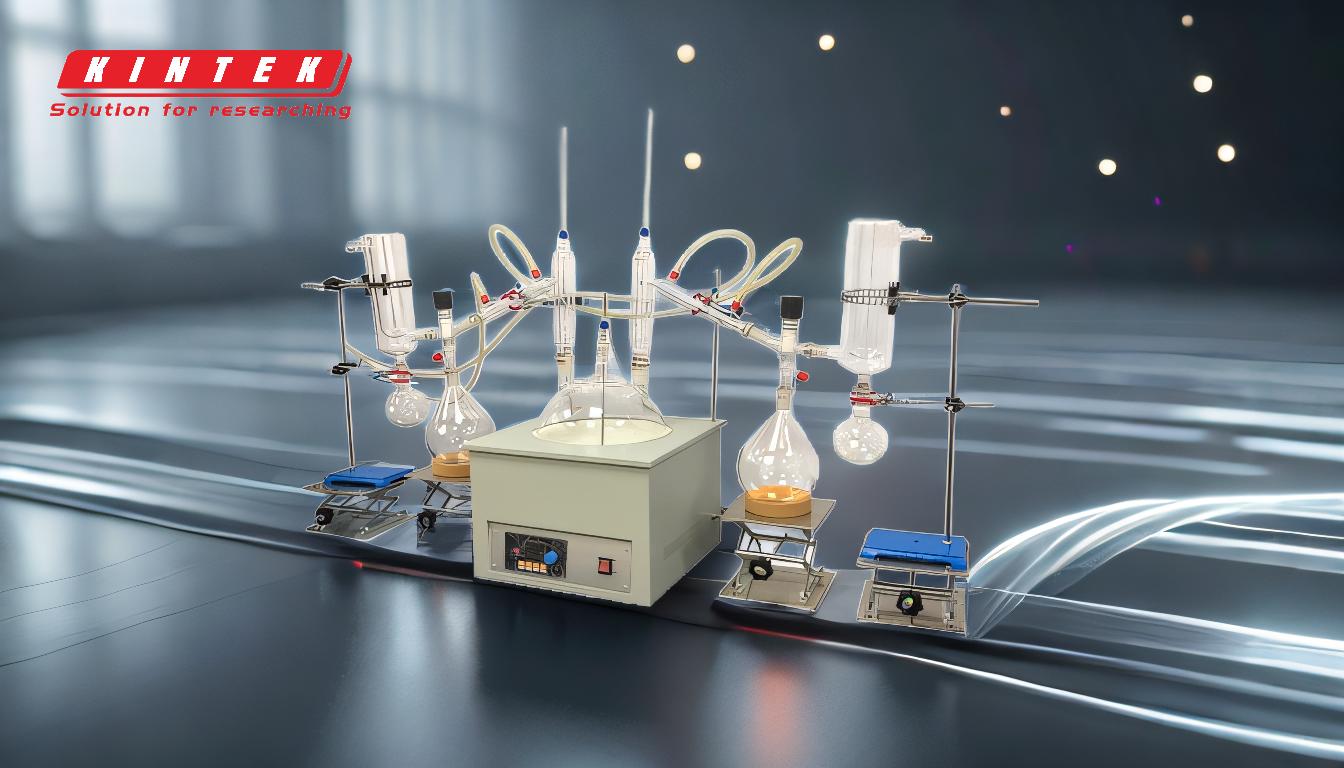Short-path distillation is a specialized distillation technique used primarily for separating and purifying high boiling point and heat-sensitive materials. It operates under reduced pressure, which lowers the boiling points of substances, allowing for gentle and efficient separation without causing thermal degradation. This method is widely employed across various industries, including pharmaceuticals, food, cosmetics, and fine chemicals, for applications such as the concentration of vitamins, removal of solvent residues, decolorization, and deodorization. The process involves the evaporation of molecules from a liquid phase, their short-distance travel to a condensation surface, and subsequent collection in a receiving flask. Its ability to handle small quantities and thermally unstable compounds makes it invaluable for producing high-purity products.
Key Points Explained:

-
Definition and Purpose of Short-Path Distillation:
- Short-path distillation is a technique designed for the separation and purification of high boiling point and heat-sensitive materials.
- It is particularly useful for substances that decompose, oxidize, or polymerize at high temperatures, as it operates under reduced pressure to lower boiling points.
-
Key Applications:
- Pharmaceuticals: Used for the distillation and concentration of natural and synthetic vitamins, as well as the removal of solvent residues in drug formulations.
- Food Industry: Applied in the processing of edible oils, decolorization, and deodorization of fatty acids and other derivatives.
- Cosmetics: Utilized for the purification of plant extracts and essential oils.
- Fine Chemicals: Employed in the preparation of high-boiling process materials and the determination of boiling ranges.
- Cannabis Industry: Extensively used for extracting and purifying CBD oil from hemp plants, separating terpenoids and cannabinoids.
-
Advantages Over Traditional Distillation:
- Reduced Material Loss: The short-path strategy minimizes the use of glassware, reducing the loss of materials that can adhere to the inner surfaces of the apparatus.
- Gentle Processing: The reduced pressure and lower temperatures prevent thermal degradation, making it ideal for heat-sensitive substances.
- Efficiency: The short distance between evaporation and condensation surfaces enhances the efficiency of the distillation process.
-
Process Mechanism:
- Evaporation: Molecules diffuse from the liquid phase to the evaporation surface in the evaporation flask. The rate of evaporation is influenced by the heating temperature and the stability of the solvent.
- Condensation: Evaporated gas-phase solvents travel a short distance to the condensation surface, where they are cooled and condensed back into the liquid phase.
- Collection: The condensed solvents are collected in a receiving flask, ready for further processing or use.
-
Industries and Materials:
- Food and Beverage: Used for increasing the alcohol content of fermented beverages and sanitizing water sources.
- Chemical Industry: Applied in the production of polyurethane, epoxy resins, and other high-boiling chemicals.
- Electronic Materials: Utilized in the purification of materials used in electronic components.
- Polymers: Effective in processing materials like polyols, lactic acid, and monoglycerides.
-
Special Considerations:
- Heat Sensitivity: The technique is particularly beneficial for substances that are unstable at high temperatures, as it allows for distillation without thermal degradation.
- Small Quantities: Ideal for distilling small quantities of high-value materials, ensuring minimal waste and maximum yield.
- Oxidation Prevention: The reduced pressure environment helps prevent oxidation, preserving the integrity of the distilled substances.
In summary, short-path distillation is a versatile and efficient method for the separation and purification of high boiling point and heat-sensitive materials. Its applications span across various industries, offering significant advantages in terms of material preservation, efficiency, and product purity. The technique's gentle processing conditions make it indispensable for handling delicate substances that require careful thermal management.
Summary Table:
| Aspect | Details |
|---|---|
| Purpose | Separation and purification of high boiling point, heat-sensitive materials |
| Key Applications | Pharmaceuticals, food, cosmetics, fine chemicals, cannabis industry |
| Advantages | Reduced material loss, gentle processing, high efficiency |
| Process Mechanism | Evaporation → Condensation → Collection |
| Industries | Food & beverage, chemical, electronic materials, polymers |
| Special Considerations | Heat sensitivity, small quantities, oxidation prevention |
Discover how short-path distillation can optimize your processes—contact our experts today!










